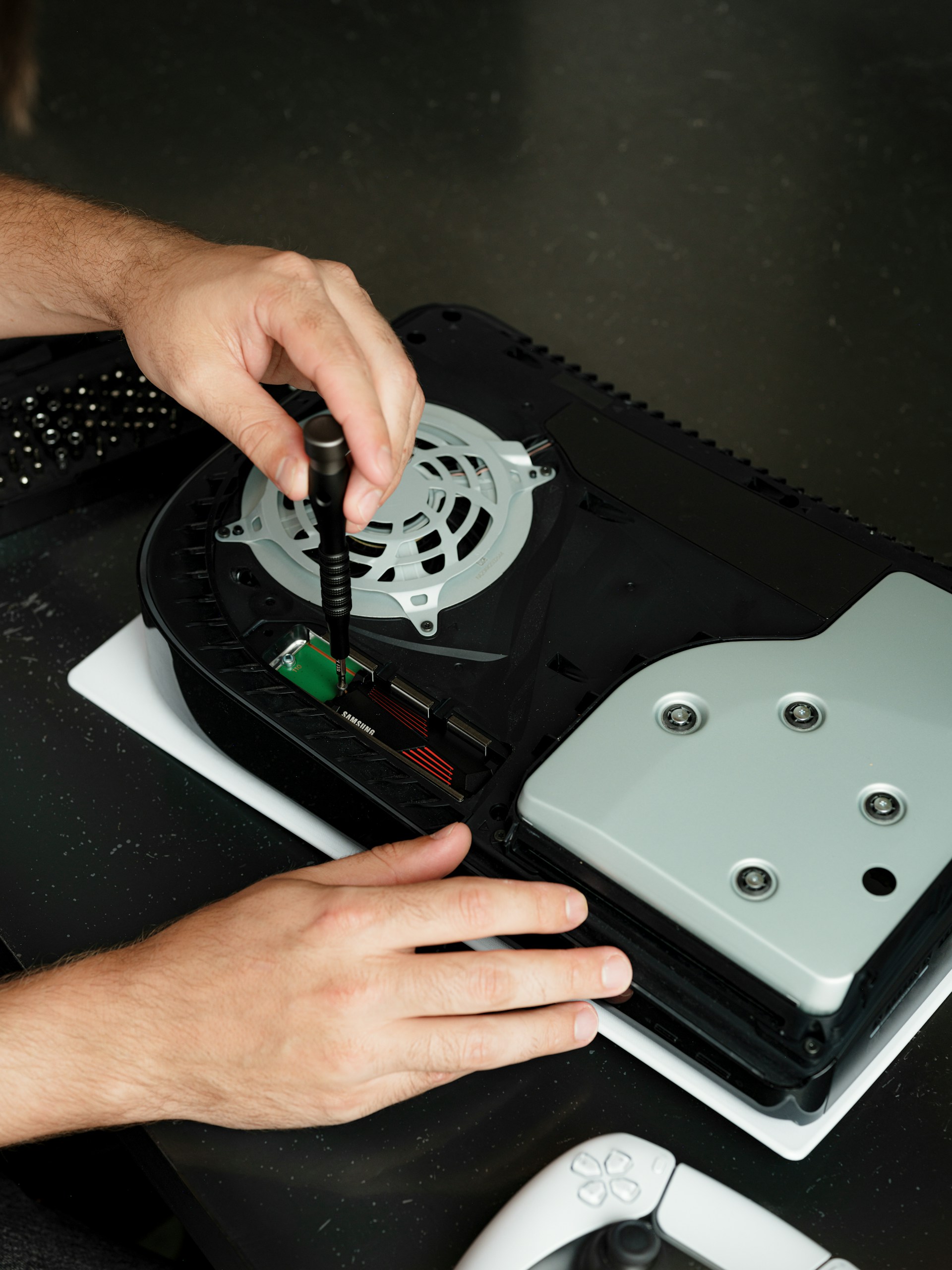
Can I Use My External Hard Disk for CCTV? An Expert’s Honest Take After 10 Years in the Field
If you’ve ever run out of storage space on your CCTV system, the thought has probably crossed your mind:
“Can I use my external hard disk for CCTV recording?”
At first, it sounds like a great idea — you already have an external drive lying around, it’s portable, and it connects easily via USB. But when it comes to CCTV systems, things aren’t always that simple.
After more than a decade of working with surveillance systems — from home DVRs to enterprise-grade NVRs — I’ve learned that choosing the right storage is about more than just plugging in a drive. In this article, I’ll break down exactly when and how you can use an external hard disk for CCTV, what limitations to expect, and what I personally recommend after years in the field.
1. Understanding How CCTV Storage Works
Before answering whether you can use an external hard disk for CCTV, it helps to understand how CCTV recorders actually store data.
A CCTV DVR (Digital Video Recorder) or NVR (Network Video Recorder) records video footage continuously or when motion is detected. The data is written directly onto a surveillance-grade internal hard disk, designed to handle 24/7 read-write cycles.
These hard drives differ from your regular computer or external USB drives. They’re built specifically for:
-
Continuous recording and overwriting
-
High data throughput
-
Minimal heat generation
-
Longer life expectancy under constant operation
External hard disks, on the other hand, are typically designed for occasional data transfers or backups, not for constant video writing. That’s where the main difference lies — but there are still some cases where an external hard drive can work.
2. So, Can You Use an External Hard Disk for CCTV?
The short answer is: Yes, but with limitations.
You can use an external hard disk for CCTV if your DVR or NVR supports it — usually via a USB port. However, there are specific conditions:
-
The DVR must support external USB storage.
Many older or budget DVRs only use USB ports for exporting video clips, not for continuous recording. -
The drive must be formatted correctly.
DVRs often require specific file systems (like FAT32 or EXT4). You may need to format the external drive using the DVR’s interface before recording. -
Recording capacity may be limited.
Even if recognized, the external drive may not sustain long-term continuous recording due to speed or firmware limitations.
In other words, while it’s technically possible, it’s not always practical or reliable.
3. How to Check If Your CCTV DVR/NVR Supports External Storage
Not every CCTV recorder allows recording directly to an external drive. Here’s how you can find out:
Step 1: Check the User Manual or Manufacturer’s Website
Look for terms like “USB recording,” “external storage support,” or “backup via USB HDD.”
Step 2: Look at the USB Ports on Your Device
Most DVRs have at least one USB port for a mouse or file export.
-
If there’s only one USB port, it’s likely for a mouse or firmware update.
-
If there are two or more ports, one might support external recording.
Step 3: Access the DVR Settings Menu
Go to Storage Settings > HDD Management or similar. If it lists “External HDD” as an option, you’re good to go.
Pro Tip: DVR brands like Hikvision, Dahua, and CP Plus often support external drives, but only for backup/export, not full-time recording.
4. The Technical Limitations of Using External Hard Disks for CCTV
Here’s where many users run into issues. While connecting an external hard disk might seem like an easy fix, these drives come with technical drawbacks when used for CCTV.
a) Designed for Intermittent Use
External drives are meant for file transfers, not continuous 24/7 operation. Extended use can lead to overheating and drive failure.
b) Slower Data Transfer Speeds
Even high-speed USB 3.0 connections are slower compared to internal SATA interfaces. This lag can cause dropped frames or incomplete recordings during high activity.
c) Limited Power Supply
Most external drives draw power through the USB port. DVR USB ports may not deliver enough consistent power, especially for large-capacity drives.
d) Compatibility Issues
Certain DVRs only recognize specific drive sizes (e.g., up to 2TB). If your external HDD exceeds that, it might not be detected.
e) Higher Failure Rates
Because external drives aren’t built for continuous use, they tend to fail faster in CCTV setups — sometimes in just months.
Personal Insight: I’ve had clients who tried using regular external drives for small 2-camera setups. They worked fine for a week or two but started dropping footage soon after. Continuous recording simply wears them out too quickly.
5. Best Practices if You Want to Use an External Hard Disk for CCTV
If you absolutely need to use your external drive — maybe as a temporary solution or for exporting backups — follow these best practices to minimize issues:
1. Format the Drive in the DVR
Always format the external hard disk through the DVR’s interface before recording. This ensures it uses the correct file system and structure.
2. Use a Powered External Drive
Avoid portable drives that draw power from USB. Instead, use desktop-style external HDDs with their own power adapters for stable performance.
3. Limit Recording Time
Don’t use it for continuous 24/7 recording. Use it for short-term backup or event-based recording (motion-triggered).
4. Keep It Cool
Ensure your DVR and drive are well-ventilated. External drives can overheat quickly in enclosed DVR cabinets.
5. Regularly Check Health Status
Most DVRs show drive status (Normal/Failed). If you see “Error” or “Bad,” replace the drive immediately.
6. When You Shouldn’t Use an External Hard Disk for CCTV
From an expert standpoint, there are certain cases where using an external HDD simply doesn’t make sense:
-
Large surveillance setups (4+ cameras) – External drives can’t handle the continuous data load.
-
Mission-critical sites (banks, offices, warehouses) – Data loss could have legal or security implications.
-
Systems with 4K or high-resolution cameras – Bitrate is too high for USB connections.
-
24/7 operations – External drives overheat and fail faster under such conditions.
- Read More : cctv camera on rent near me
In these scenarios, you’re far better off installing a proper surveillance-grade internal hard disk — like a WD Purple or Seagate SkyHawk. They’re purpose-built for the constant recording and overwriting that CCTV requires.
7. A Real-Life Example from My Experience
A few years ago, I worked with a client who wanted to add an external hard disk to their DVR after running out of storage. The DVR supported USB storage, but only for backups.
We connected the drive, formatted it via the DVR, and set it to record motion-based clips. It worked fine for about a month. Then, the client noticed missing footage — especially during high activity hours.
The issue? The external HDD couldn’t maintain a stable write speed. It was overheating and disconnecting intermittently.
We eventually replaced it with a 2TB internal surveillance-grade hard disk, and the problem disappeared. That experience reinforced my belief: external drives are fine for temporary use or data export, not for full-time recording.
8. Alternatives to Using an External Hard Disk for CCTV
If you’re low on storage or need flexibility, here are better alternatives:
a) Upgrade to a Larger Internal HDD
Most DVRs support up to 6TB or 10TB surveillance-grade drives. It’s the most reliable long-term solution.
b) Use Network Attached Storage (NAS)
If your DVR/NVR supports it, connect it to a NAS system. It provides more storage, redundancy, and even remote access capabilities.
c) Enable Cloud Backup
Many modern systems support cloud backup for motion-detected events. It’s secure and off-site, though dependent on internet speed.
d) Add a Second Internal Drive
Some high-end NVRs allow dual HDD bays — one for main recording and another for backup.
These solutions cost a bit more upfront but ensure reliability, longevity, and data safety.
Conclusion: Use External Hard Disks for CCTV Only as a Temporary Solution
So, can you use your external hard disk for CCTV?
Yes, but only in specific situations and for short-term use.
External drives are great for backups, exporting footage, or temporary storage, but not for continuous, full-time recording. They simply aren’t built to handle the heat, data load, and constant read/write cycles of CCTV operation.
If you value your security footage, invest in a proper surveillance-grade internal HDD — it’s designed for exactly this purpose and saves you the risk of data loss.
From my years in the field, I can say this confidently: a few extra dollars spent on the right drive today will save you countless headaches tomorrow.
FAQs
1. Can I connect my external hard drive directly to the DVR?
Yes, if your DVR supports external USB storage. However, most DVRs only allow exporting or backing up data, not continuous recording.
2. Can I use a portable USB hard disk for CCTV recording?
It’s not recommended. Portable drives overheat and fail faster under 24/7 recording conditions. Use surveillance-grade internal drives instead.
3. How long does an external hard disk last if used for CCTV?
Typically, much shorter than its rated lifespan — sometimes only a few months — due to continuous write cycles and heat buildup.
